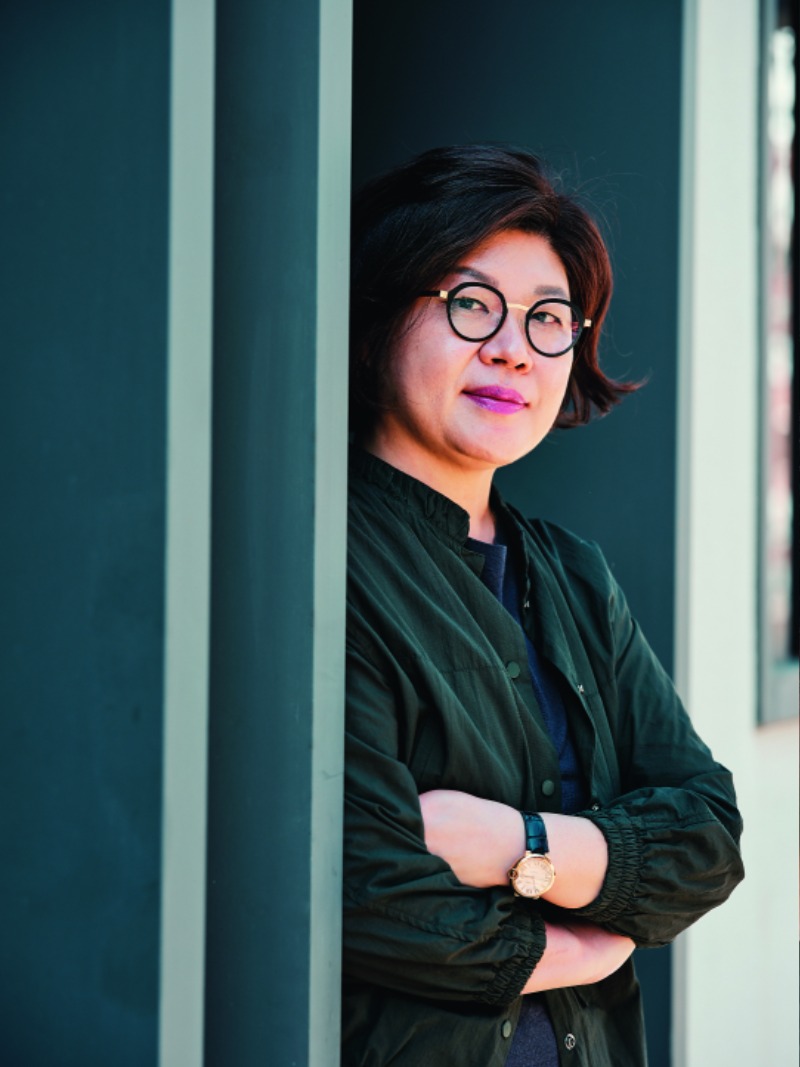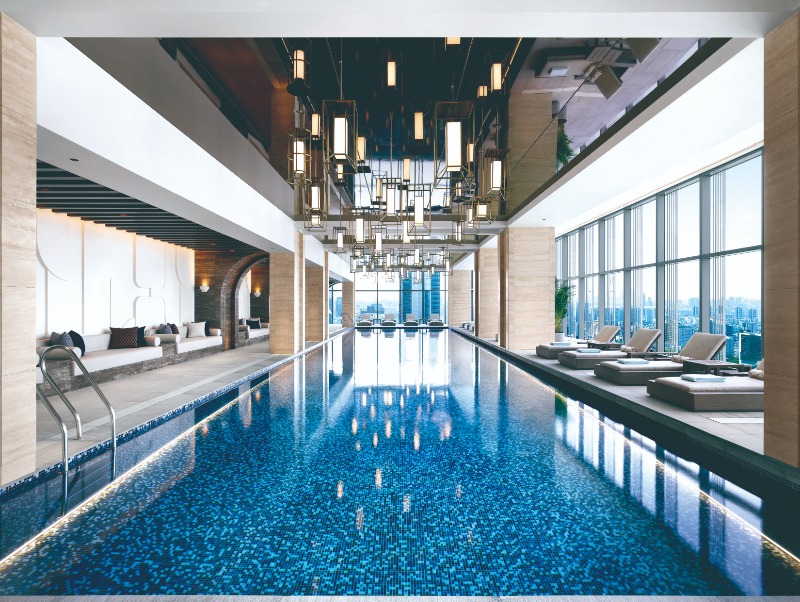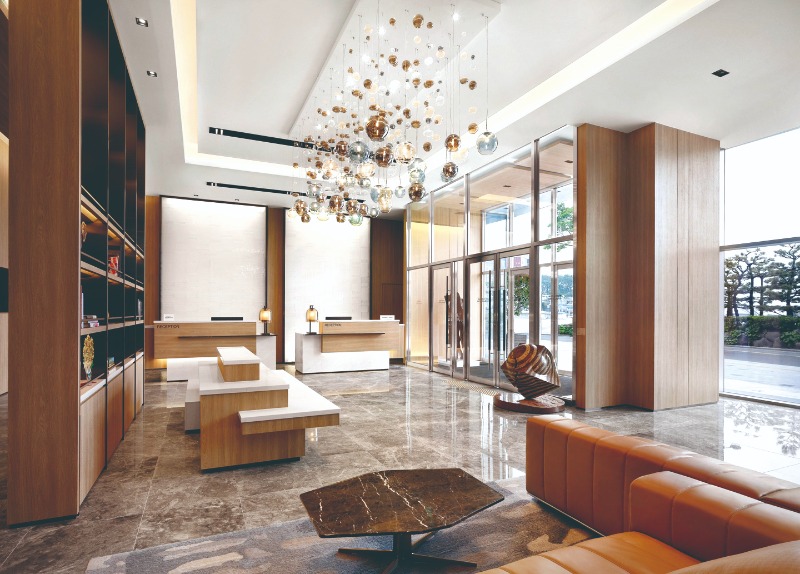Hotel developer Han Lee-kyung stands at the forefront of recent trends in the Korean hospitality scene. She shares her insights on the latest changes and what makes hotels successful and unique.

Hotel developer Han Lee-kyung, managing director of Polaris Advisor, focuses on turning a stay into a memorable experience, a notable trend among hotels today.
The COVID-19 pandemic has reshaped the travel culture. Paradoxically, the crisis d an outsized opportunity for the domestic hotel industry in Korea. With restrictions in place for overseas travel, getaways to destinations inside Korea skyrocketed. In fact, demand for accommodations at the most popular places became so high that making a reservation became almost impossible. Now, Korean hoteliers are looking for more ways to maintain their momentum.
Han Lee-kyung has plenty of insight into the subject. Over the past 20 years, she has worked on the development of around 40 hotels and resorts spanning the globe, from North America to Europe, the United Arab Emirates, Malaysia, China and Japan. She is currently the founder and managing director of the property management company Polaris Advisor, which oversees new openings in Korea for the Marriott Hotel Group.
Han is lauded for her expertise in construction, real estate development and the hotel industry. I met her at WonAngARi in Cheonyeon-dong, Seoul. Originally constructed in 1960 as the WonAng Inn, Han renovated the 40-square-meter building herself and has been running it as a multi-use cultural space since 2019.
Which projects are particularly meaningful to you?
As a hotel developer, I can say that I would be proud to offer up a project like SANGHA Retreat by Octave anywhere in the world. It was the first holistic wellness retreat in China, set on 47 acres. In order to minimize the destruction of nature, we reused things that had been discarded and chose not to use any marble because of the harm caused by mining. Also, when we used wood, we left it bare wherever possible, without paint or wax overlay.
There was also an urban wellness center in Shanghai based on a similar model called THE LIVING ROOM by Octave. When we were developing those projects, lots of people were asking, “What is wellness anyway? Why do we need it?” But now, the hotels lead new trends. Before long, they received attention from media outlets like “Forbes,” which was really gratifying.
What was your most memorable project in Korea?
I’d have to say Fairfield by Marriott Busan Songdo Beach. It opened amid the pandemic so we were all quite concerned. But since the opening, business has been so good that it’s pointed to as a success story. It’s a hotel where guests can enjoy a clean, sophisticated atmosphere for a reasonable price, and a particular strong point is that every room has an ocean view. As for luxury hotels, the Josun Palace Seoul Gangnam stands out. It’s popular for the impressive view from the upper floors.
What is unique about Korean hotels?
When it comes to hotels, the facilities are important, but practiced, expert personnel are absolutely crucial. Employees at Korean hotels have a service style that isn’t excessively by-the-book and also not overly polite. To put it simply, they’re appropriately personable and yet have a polished manner. Because there are also many employees who can converse in English, travelers from overseas will probably feel more relaxed dealing with Korean hotels than they would in other countries in Asia.

The Josun Palace is the flagship of the luxurious Josun Hotels and Resorts brand. World-class travel magazine Condé Nast included the hotel on its “2022 Hot List” of most exciting new openings. From the pool there is view of the Gangnam district in Seoul.
© JOSUN HOTELS & RESORTS Co.
How important is the location of a hotel?
Korea might seem like a small country on the map, but it has a very diverse terrain. In Gangwon Province, the rugged landscape is striking, and right at its heart sits Park Roche Resort & Wellness. Enjoying an environmentally friendly and healthy menu of rustic wild greens and vegetables in such a natural environment is a truly memorable experience.
Seemingly worlds away, in Jeolla Province, the mountains are gentle and there are salt pans, which are pretty rare the world over. Also, 40 percent of the world’s dolmens are in Korea, and 1,665 of these are in Gochang, North Jeolla Province. Back in 2000, the whole area around the village of Jungnim, which has a high concentration of dolmens, became a UNESCO World Heritage Site. In addition to such cultural heritage, there is good farmland, which means the cuisine is outstanding, too. Many specialty dishes are steamed and seasoned, so they also stand out as wellness food. In Korea, location, cuisine and hotels can really merge together as one.
How have hotel trends changed?
Hotels began in Greek and Roman times and have always basically been places to eat and sleep. Coming into modern and contemporary times, they began to change when the concept of vacations was introduced, but until recent years, the hotels run by global chains were extremely generic. They were so much the same that when you woke up, there was no way to tell where you were. People began to get sick and tired of this aspect, so boutique hotels came on the scene, catering to individual lifestyles. In America, there was even a craze of people recreating the wallpaper or design of boutique hotels in their own homes. Now, people’s interest is focused on the so-called “experience.”
How might trends change?
Hotels are focusing on the experience economy. Since there are guests who want to appreciate art, media art and other artworks are being brought into hotels. Moreover, as guests are increasingly looking for a restorative experience, packages that prioritize healing are being developed. Hotel design is also reflecting these changes. If hotel interiors in the past were all about expensive marble and sparkling chandeliers, now, with widespread awareness of environmental issues like global warming, there’s a change toward a more environmentally friendly style. An example in the U.S. would be The One Boutique Hotel New York, where the interior is put together to make you feel as though you’re inside a log cabin. Not using fancy wallpaper, it’s boldly finished with wooden surfaces. There’s also a tendency not to use the kind of busy-looking carpet that was common in the past. Hotels are changing to be as environmentally friendly as possible, simpler and more comfortable.

The lobby of the Fairfield by Marriott Busan Songdo Beach. Designed to target customers who value practicality and rationality, the hotel affords views of Songdo Beach, one of the oldest tourist beaches in Korea, from every room.
Courtesy of Han Lee-kyung
You seem to have a sixth sense for changing trends.
Hotels don’t pioneer trends per se. Because doing so would need largescale investment. This means they usually follow what guests want. But I believe that hotels shouldn’t chase trends but lead them. Of course, we still need to look carefully at media such as Instagram to see what inspires people, but we also need the discernment to perceive the direction of change before it happens and forecast where things are headed. To do this, I think it’s important to make one’s thinking muscle as robust as possible. I read voraciously – philosophy, literature, history, fiction, anything really. And as I read, I brood over my own way of thinking.
With the pandemic, it seems priorities have changed.
I think people are more concerned about privacy and hygiene. We see people wanting to enjoy their time safely with their families and not mix with strangers. Hotels are now being designed so that the rooms aren’t all crammed together in a row as before. The piping design is also changing so that hot and cold air is sterilized before coming out, using methods such as laser light in the pipes. Also, since fewer guests are being accommodated to achieve physical distancing, it looks like price hikes will be unavoidable. Polarization is becoming more apparent, with luxury hotels getting even more exclusive and budget hotels even more basic. It’s a case of the disappearing middle.
Which hotels would you recommend?
Strictly speaking, they’re not hotels, but there are some hanok [traditional Korean house] stays that I really want to recommend: Ntjam, Mouryub and Saro, located in Jeonju, North Jeolla Province. They’re all run by young people fresh out of university. Their bedding arrangements match those in luxury hotels, which was a lovely surprise. They also maintain that open and cozy feel unique to hanok. While being traditional, they’re also very modern, so anyone, no matter their inclinations, would have a great experience there.
Also, the Stanford Hotel & Resort in Tongyeong, South Gyeongsang Province is pretty good. I go to Tongyeong almost every year to attend the Tongyeong International Music Festival and stay there every time. It’s not that it doesn’t have any flaws, but even so, the sea view from the veranda is always a sight for sore eyes. Being able to hear the waves and feel the sea breeze is a real selling point.
Kwon Ki-bong Author
Heo Dong-wuk Photographer